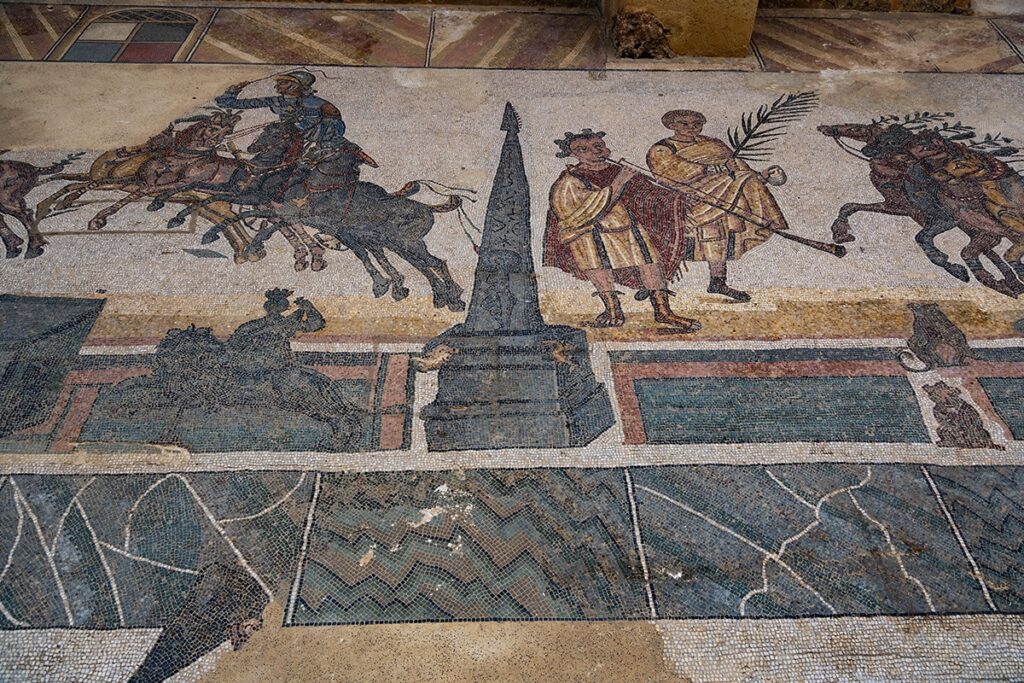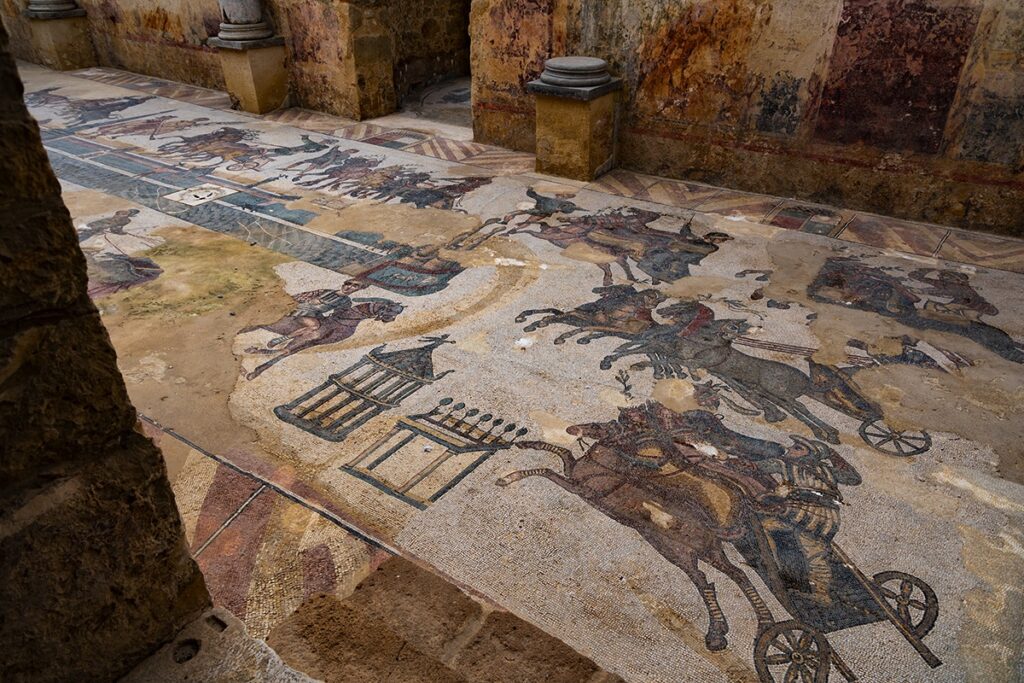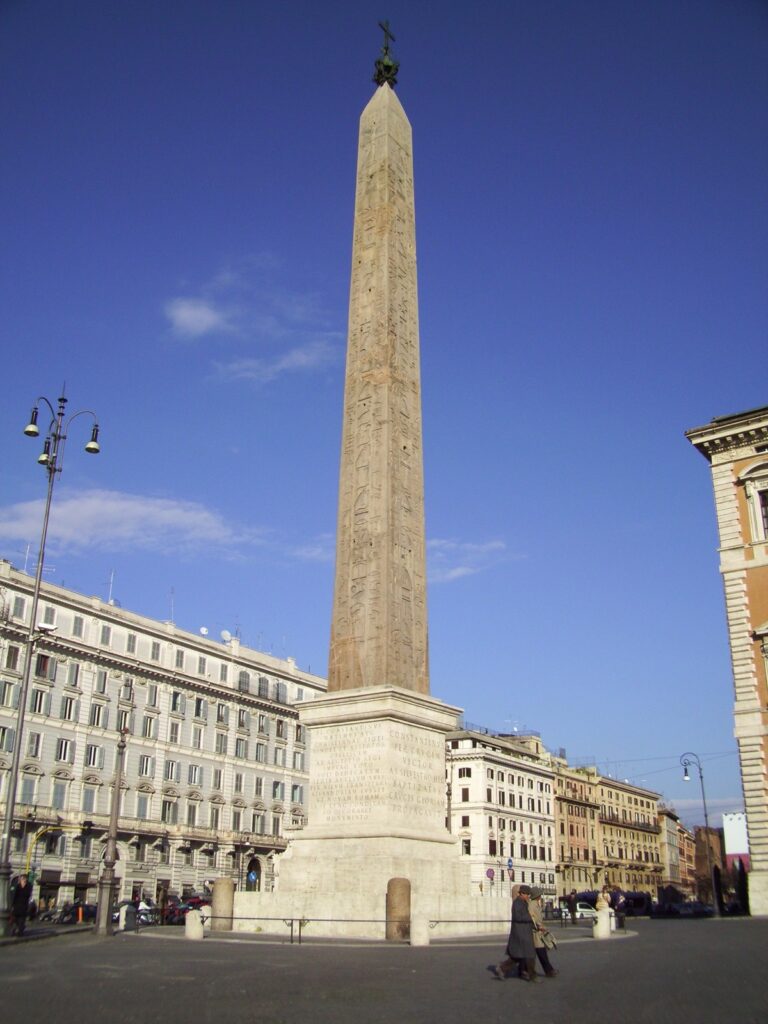An interesting clue for the date is the obelisk reproduced on the
spine
of the
Circus Maximus
,
 which decorates the floor mosaic of the
biapsidal hall
which decorates the floor mosaic of the
biapsidal hall
, known for the dynamic scene of the quadriga (chariot) race.
 Its structure is a point of contention for experts; some believe that it is the
Obelisk of Augustus
Its structure is a point of contention for experts; some believe that it is the
Obelisk of Augustus
, decentralised in the mosaic of Piazza Armerina, perhaps to represent its transfer during the year 327 AD to make room for a
larger obelisk
 that arrived in Rome only thirty years later by
Constantius II
that arrived in Rome only thirty years later by
Constantius II
.
The race seems to take place around a single obelisk, perhaps during the period in which the first one was moved, which attests to completion of the work between 327 and 357 AD.
Another explanation leads us to think that the depiction was made in this way to make the award ceremony legible and, therefore, only for compositional needs.
These varying interpretations are joined, due to the understanding of the years of construction of the late antiquity domus, by an important historical event passed down through sources. It concerns a series of earthquakes that occurred in Sicily between 362 and 365 AD, which may also have affected the Villa del Casale, leading to restoration work for damage or perhaps an entire reconstruction.